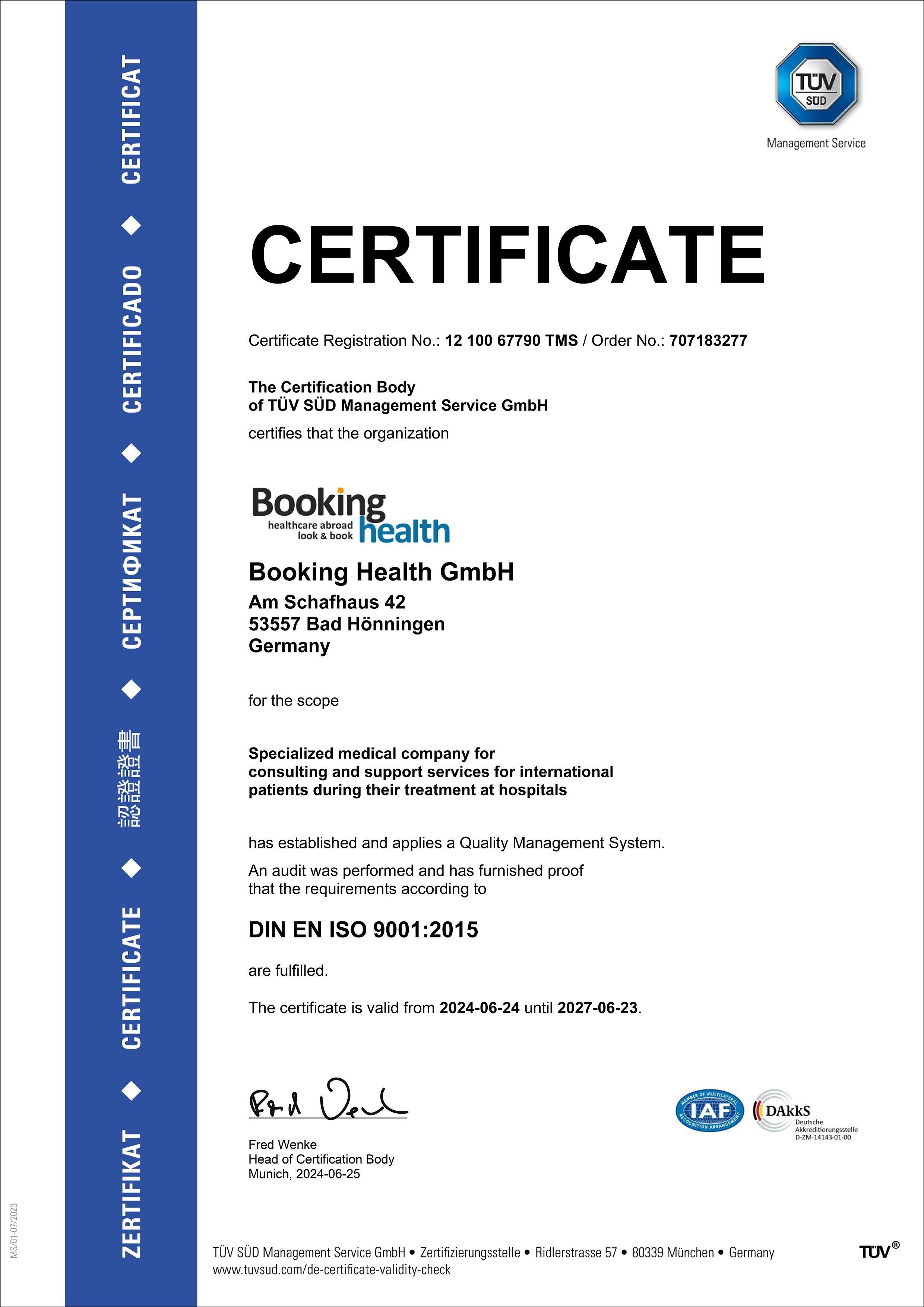Top Hospitals for Cervical Spinal Stenosis Treatment in Germany
Each hospital in this list meets Booking Health’s strict international standards: at least 250 surgeries per year, ISO‑certified quality management, and documented survival outcomes. Our medical board then ranks the clinics by clinical expertise, technology, and patient‑satisfaction scores.
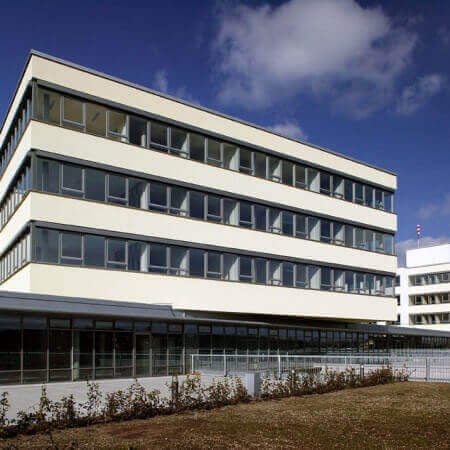
According to the Focus magazine in 2019, the University Hospital Würzburg ranks among the top national German hospitals! The hospital is one of the oldest medical facilities in Germany. The centuries-old traditions of first-class treatment are combined with the very latest achievements of modern evidence-based medicine and 









Diagnostic tests for cervical spinal stenosis
Price from:
0.00
Go to the program Treatment of cervical spinal stenosis (1 segment) with decompressive laminectomy
Price from:
11479.44
Go to the program Treatment of cervical spinal stenosis (4 segments) with decompressive laminectomy
Price from:
16919.57
Go to the program Surgical treatment of cervical spinal stenosis in combination with instability with decompressive laminectomy and the stabilizing operation (4 segment)
Price from:
30228.25
Go to the program Treatment of cervical spinal stenosis (2-3 segments) with decompressive laminectomy and discotom
Price from:
15559.24
Go to the program Treatment of cervical spinal stenosis (4 segments) with decompressive laminectomy and discotomy
Price from:
17008.31
Go to the program Treatment of cervical spinal stenosis in combination with instability with decompressive laminectomy and the stabilizing operation (1 segment)
Price from:
22455.98
Go to the program Treatment of cervical spinal stenosis in combination with instability with decompressive laminectomy and the stabilizing operation (2-3 segments)
Price from:
30016.32
Go to the program Treatment of cervical spinal stenosis (1 segment) with decompressive laminectomy and discotomy
Price from:
11714.34
Go to the program 
According to the reputable Focus magazine, the University Hospital Carl Gustav Carus Dresden ranks among the top five German hospitals! The hospital is the benchmark for modern high-quality medicine. Positioning itself as a maximum care medical facility, the hospital represents all medical fields. There are 26 specialized depart









Diagnostic tests for cervical spinal stenosis
Price from:
0.00
Go to the program Treatment of cervical spinal stenosis (1 segment) with decompressive laminectomy
Price from:
14896.45
Go to the program Treatment of cervical spinal stenosis (4 segments) with decompressive laminectomy
Price from:
21484.98
Go to the program Surgical treatment of cervical spinal stenosis in combination with instability with decompressive laminectomy and the stabilizing operation (4 segment)
Price from:
39192.04
Go to the program Treatment of cervical spinal stenosis (2-3 segments) with decompressive laminectomy and discotom
Price from:
20052.62
Go to the program Treatment of cervical spinal stenosis (4 segments) with decompressive laminectomy and discotomy
Price from:
21671.86
Go to the program Treatment of cervical spinal stenosis in combination with instability with decompressive laminectomy and the stabilizing operation (1 segment)
Price from:
29492.54
Go to the program Treatment of cervical spinal stenosis in combination with instability with decompressive laminectomy and the stabilizing operation (2-3 segments)
Price from:
39486.44
Go to the program Treatment of cervical spinal stenosis (1 segment) with decompressive laminectomy and discotomy
Price from:
14530.01
Go to the program 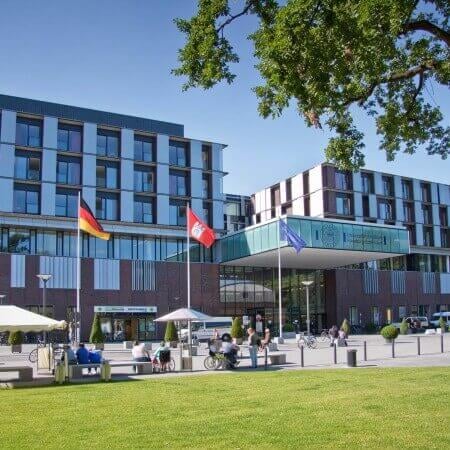
According to the Focus magazine, the University Hospital Hamburg-Eppendorf is one of the top ten hospitals in Germany! Since its foundation in 1889, the hospital has taken a leading position in the European medical arena, which it still holds today. A highly competent medical team of more than 15,300 employees takes care of the 

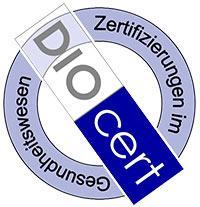

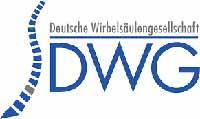





Diagnostic tests for cervical spinal stenosis
Price from:
0.00
Go to the program Diagnostic tests for cervical spinal stenosis
Price from:
0.00
Go to the program Treatment of cervical spinal stenosis (1 segment) with decompressive laminectomy
Price from:
14718.97
Go to the program Treatment of cervical spinal stenosis (1 segment) with decompressive laminectomy
Price from:
14744.03
Go to the program Treatment of cervical spinal stenosis (4 segments) with decompressive laminectomy
Price from:
21784.61
Go to the program Treatment of cervical spinal stenosis (4 segments) with decompressive laminectomy
Price from:
21708.4
Go to the program Surgical treatment of cervical spinal stenosis in combination with instability with decompressive laminectomy and the stabilizing operation (4 segment)
Price from:
39111.65
Go to the program Surgical treatment of cervical spinal stenosis in combination with instability with decompressive laminectomy and the stabilizing operation (4 segment)
Price from:
39257.81
Go to the program Treatment of cervical spinal stenosis (2-3 segments) with decompressive laminectomy and discotom
Price from:
19593.26
Go to the program Treatment of cervical spinal stenosis (2-3 segments) with decompressive laminectomy and discotom
Price from:
20029.65
Go to the program Treatment of cervical spinal stenosis (4 segments) with decompressive laminectomy and discotomy
Price from:
21843.08
Go to the program Treatment of cervical spinal stenosis (4 segments) with decompressive laminectomy and discotomy
Price from:
21621.75
Go to the program Treatment of cervical spinal stenosis in combination with instability with decompressive laminectomy and the stabilizing operation (1 segment)
Price from:
29225.27
Go to the program Treatment of cervical spinal stenosis in combination with instability with decompressive laminectomy and the stabilizing operation (1 segment)
Price from:
29593.8
Go to the program Treatment of cervical spinal stenosis in combination with instability with decompressive laminectomy and the stabilizing operation (2-3 segments)
Price from:
39069.89
Go to the program Treatment of cervical spinal stenosis in combination with instability with decompressive laminectomy and the stabilizing operation (2-3 segments)
Price from:
39389.35
Go to the program Treatment of cervical spinal stenosis (1 segment) with decompressive laminectomy and discotomy
Price from:
14889.14
Go to the program Treatment of cervical spinal stenosis (1 segment) with decompressive laminectomy and discotomy
Price from:
15026.95
Go to the program 

